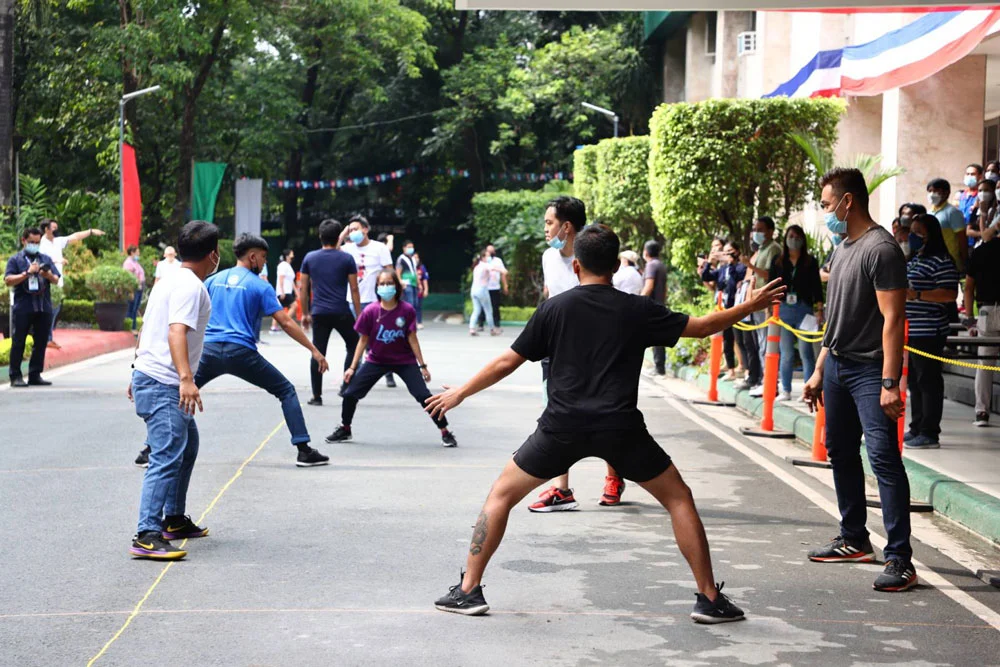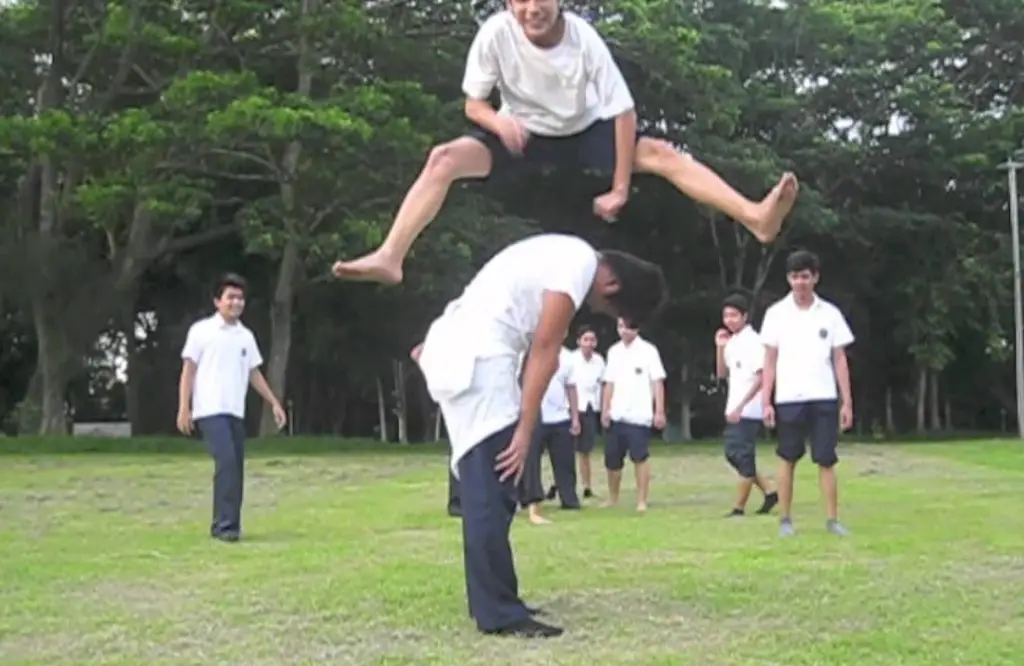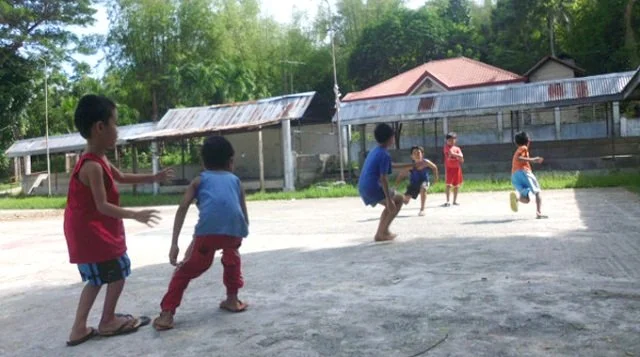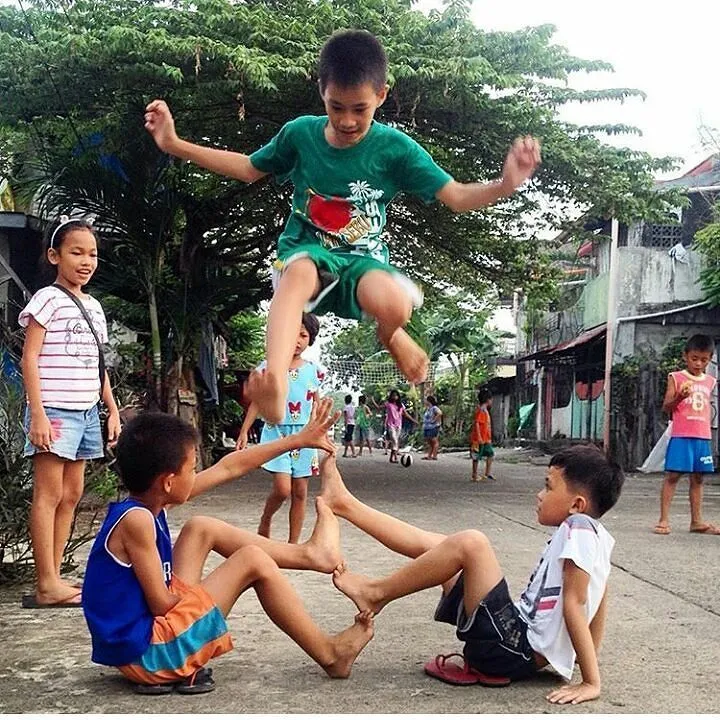The Philippine yearly sporting event, Palarong Pinoy, also known as the Filipino Games or Traditional Filipino Games, honors the nation’s rich cultural legacy via traditional indigenous sports and games. The occasion strives to uphold and advance Filipino culture, promote physical activity, and create unity among participants. It serves as a venue for teaching qualities like cooperation, sportsmanship, and esteem for cultural heritage, in addition to serving as a venue for competition. It is commonly observed in classrooms, neighborhoods, and even at the national level, bringing together individuals of all ages in a joyous and interesting setting.

We discover the exhilarating world of Palarong Pinoy, a celebration of Filipino culture through traditional sports and games! Join us in this exciting event where heritage and athleticism unite, showcasing the rich tapestry of the Philippines’ sporting heritage. Experience the thrill of classic games, from sipa and patintero to kadang-kadang and luksong tinik. Immerse yourself in the spirit of camaraderie and fun as participants of all ages come together to relive the past and forge lasting memories. Embrace the passion, pride, and unity of Palarong Pinoy – an unforgettable journey into the heart of Filipino traditions!
Top 6 most played games in Palarong Pinoy
Patintero

Patintero is a popular traditional Filipino game often played by children in the Philippines. It is a team game that combines tag and territorial capture elements, making it an exciting and strategic outdoor activity.
Mechanics of Patintero:
- Players: The game requires two teams with an equal number of players. Each unit has a standard of players, usually five, but it can vary depending on the available participants.
- Playing Area: The playing field is usually a rectangular area marked with lines or boundaries. It is divided into equal sections, typically five, although this can also vary.
- Objectives: The primary goal of Patintero is for one team, called the “attackers” or “offense,” to cross the playing area and reach the other side without being tagged by the members of the opposing team, known as the “defenders.”
- Tagging: The defenders stand along the lines dividing the sections of the playing area. They can only move their feet once the game starts, but they can stretch and reach out as far as possible to tag the attackers.
- Movement: The attackers must work together to pass through the defenders’ territory without getting tagged. They can jump over the lines to evade the defenders, cooperate, and strategize to create distractions or break through the defense.
- Turns: The game proceeds, with the teams taking turns being the attackers and defenders. The team that crosses the playing area without being tagged gets a point.
- Winning: The game continues for several rounds, and the team with the most points at the end of the designated rounds or time limit is declared the winner.
Tumbang Preso

Tumbang Preso is another popular traditional Filipino game often played by children in the Philippines. It is a game of skill and accuracy that requires players to knock down a target object to score points.
Mechanics of Tumbang Preso:
- Players: The game is typically played by a group of children, but the number of participants can vary depending on the available players.
- Target Object: The main component of Tumbang Preso is the “preso,” which is usually a tin can or any small object that can be easily knocked down.
- Playing Area: The game is usually in an open space, such as a street or a yard, with enough room for the players to move around freely.
- Roles: One player takes on the part of the “it” or “preso guard,” and their task is to guard the target object (the can) from being knocked down by the other players.
- Gameplay: The other players become the “attackers” and stand far from the can, forming a throwing line. The objective is to knock down the can by throwing a slipper or soft object at it.
- Throwing the Slipper: Each player takes turns throwing their slipper or soft object at the can, aiming to knock it down. The “preso guard” must try to protect the can by avoiding the thrown objects or catching them.
- Tagging the “Preso Guard”: While the “preso guard” is focused on guarding the can, the attackers can also try to tag them. If the “preso guard” is tagged before they can recover the can or tag an attacker, a new “preso guard” is chosen from among the attackers.
- Scoring: When the can is knocked down, the player who successfully did it earns points or sometimes gets a special role in the next round.
- Winning: The game continues with different players taking turns as the “preso guard” until everyone has had a chance. The player with the most points at the end of the game is declared the winner.
Luksong Baka

Luksong Baka, or “Jump Over the Cow,” is a traditional Filipino outdoor game played by children in the Philippines. It is a fun and physically active game that involves jumping over a “baka” (cow) made up of players bent over on all fours.
Mechanics of Luksong Baka:
- Players: The game is typically played by a group of children, and the number of participants can vary depending on the available players.
- Formation: The players participating in the game form a “baka” or cow by getting down on all fours, with their hands and knees touching the ground. The cow’s back is formed by the interlocked hands of the players, creating a stable and elevated surface to jump over.
- Jumping Levels: Luksong Baka is played in different levels or rounds, with the height of the “baka” increasing after each successful jump. The levels can be adjusted based on the players’ skill level and age.
- Gameplay: One player is chosen to be the “it” or the jumper, while the others form the “baka” by positioning themselves on the ground. The jumper stands far from the “baka” to prepare for the jump.
- Jumping Technique: The jumper takes a running start and leaps over the “baka,” trying to clear it without touching any part of the players forming the cow. The jump must be clean and prosperous for the jumper to advance to the next round.
- Advancing Levels: If the jumper successfully clears the first level, the “baka” is raised slightly, and the jumper attempts to jump over it again. The game continues with the “baka” increasing with each successful jump.
- Challenges: As the “baka” gets taller, it becomes more challenging for the jumper to clear it. Players forming the “baka” can adjust their positioning to make it more difficult for the jumper, adding an element of strategy to the game.
- Winning: The game continues until the jumper cannot clear the “baka” without touching any players or until they decide to stop playing. If the jumper clears all the levels, they are declared the winner.
Agawang Base

Agawang Base, also known as “Capture the Flag” in English, is a popular traditional Filipino outdoor game played by children and young adults. It is an exciting team-based game that involves strategy, speed, and teamwork.
Mechanics of Agawang Base:
- Players: Agawang Base is typically played by two teams with an equal number of players. The number of players on each team can vary based on the available participants.
- Playing Area: The game is usually played in an open outdoor space, such as a field or a large playground. The area is divided into two territories, one for each team, with a designated “base” or “home” area for each team where they hide their flag.
- Flags: Each team has a flag placed in their “base” area. The flags can be any distinct object, like a piece of cloth or a bandana, easily visible and recognizable.
- Objectives: The main aim of Agawang Base is to capture the opponent’s flag and bring it back to your team’s base without being tagged by the opposing team.
- Gameplay: The two teams start from their respective bases. At the beginning signal, players can move freely within their territory and the neutral zone but not enter the opponent’s territory.
- Capturing the Flag: Players sneak into the opponent’s territory to find and capture their flag without being tagged by the defenders. Once a player successfully takes the flag, they must carry it back to their team’s base to score a point.
- Tagging: If a player from the opposing team tags a player while they are in their territory or the neutral zone, the tagged player is considered “caught” and must go to a designated “jail” or “prison” area. They can only be freed if a teammate tags them while running through the jail during the game.
- Rescuing Teammates: Players can also attempt to save their teammates in jail by reaching the jail area without getting caught and tagging the jailed players, allowing them to rejoin the game.
- Winning: The game continues until a team successfully captures the opponent’s flag and brings it back to their base or until a specific time limit is reached. The team with the most captured flags or points at the end of the game is declared the winner.
Luksong Tinik

Luksong Tinik, also known as “Jump Over Thorns” in English, is a traditional Filipino outdoor game children in the Philippines enjoy. It involves jumping over a series of “tinik” or thorns made up of players in a crouched position.
Mechanics of Luksong Tinik:
- Players: Luksong Tinik is typically played by a group of children, but the number of participants can vary based on the available players.
- Formation: The players in the game form a line by sitting on the ground with their legs extended forward. The players then interlock their ankles to create a row of “tinik” or thorns.
- Jumpers: One or two players are chosen to be the jumpers, and they will be the ones attempting to jump over the “tinik.”
- Levels: Luksong Tinik is played in different levels or rounds, with the height of the “tinik” increasing after each successful jump. The levels can be adjusted based on the players’ skill level and age.
- Gameplay: The jumpers take turns trying to jump over the “tinik” without touching any part of the players forming the thorns. The jumpers can start from a short distance away to build momentum for their jump.
- Jumping Technique: To successfully jump over the “tinik,” the jumper must time their jump accurately and use proper technique to clear the row of crouched players. They can use a combination of speed, strength, and agility to make a clean jump.
- Advancing Levels: If the jumper successfully clears the first level of “tinik,” the players forming the thorns adjust their position to make it slightly higher for the next round. The game continues with the “tinik” getting taller with each successful jump.
- Challenges: As the “tinik” gets higher, it becomes more challenging for the jumper to clear it. The players forming the “tinik” can adjust their positioning to make it more difficult, adding an element of strategy to the game.
- Winning: The game continues until the jumper cannot clear the “tinik” without touching any players or until they decide to stop playing. If the jumper clears all the levels, they are declared the winner.
Chinese Garter

Chinese Garter, also known as “Chinese Jump Rope,” is a traditional Filipino game played by two teams of players using a garter or elastic band tied in a loop. It is a fun and challenging game that requires flexibility, coordination, and teamwork.
Mechanics of Chinese Garter:
- Players: Chinese Garter is typically played by two teams, with an equal number of players on each team. The number of players can vary, but four or more participants commonly play it.
- Garter Setup: The game requires a long, stretchy garter or elastic band. The garter is tied in a large loop, and its length depends on the players’ skill level and the desired height of the game.
- Formation: The two teams stand facing each other, with the garter looped around the ankles of two players, one from each team, creating a “gate” or “arch.”
- Levels: Chinese Garter is played in different levels or rounds, with the height of the garter increasing after each successful round. The levels can be adjusted based on the players’ skill level and age.
- Gameplay: The objective of the Chinese Garter is for the players to jump over the garter without touching it or getting tangled. The game begins with the garter at ankle height and progresses to knee, waist, shoulder, and even head height.
- Jumping Technique: Players take turns attempting to jump over the garter in a series of prescribed jumps. These include basic jumps, hopping on one foot, landing with both feet inside the garter, and other challenging moves.
- Advancing Levels: If a player successfully clears a level without touching the garter, the garter is raised higher for the next round. The game continues with the garter getting higher with each successful round.
- Challenges: As the garter gets higher, it becomes more challenging for the players to clear it. Players must demonstrate flexibility, timing, and coordination to jump over the garter accurately.
- Winning: The game continues until a player cannot jump over the garter without touching it or until they decide to stop playing. The team with the most successful jumps or rounds completed is declared the winner.
Palarong Pinoy is a traditional Filipino sports event celebrating the country’s rich cultural heritage through indigenous games and activities. It brings together participants of all ages to compete in classic Filipino tournaments like sipa, patintero, tumbang preso, and more.
The event fosters camaraderie, teamwork, and a sense of pride in Filipino traditions while promoting physical activity and preserving cultural heritage. Palarong Pinoy is a joyful celebration showcasing the Philippines’ unique spirit and people.
If you’re interested in more and you’d like to set a meeting with us you Contact us at info@holifit.com.ph and discover how HoliFit can help your business reach its goals. You can also check out our Facebook page, Instagram, LinkedIn, and Youtube Channel for more information about our services.
Don’t miss out on this opportunity. To find out how HoliFit can help your business reach its goals through Team Building – contact us today!

